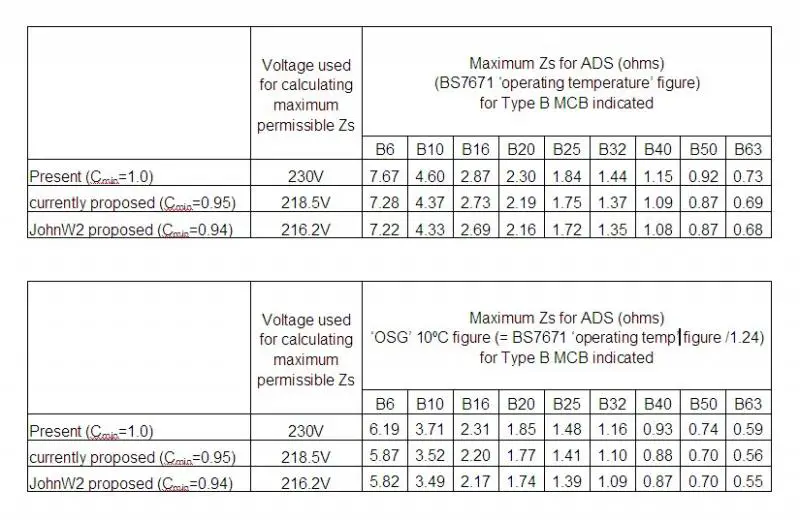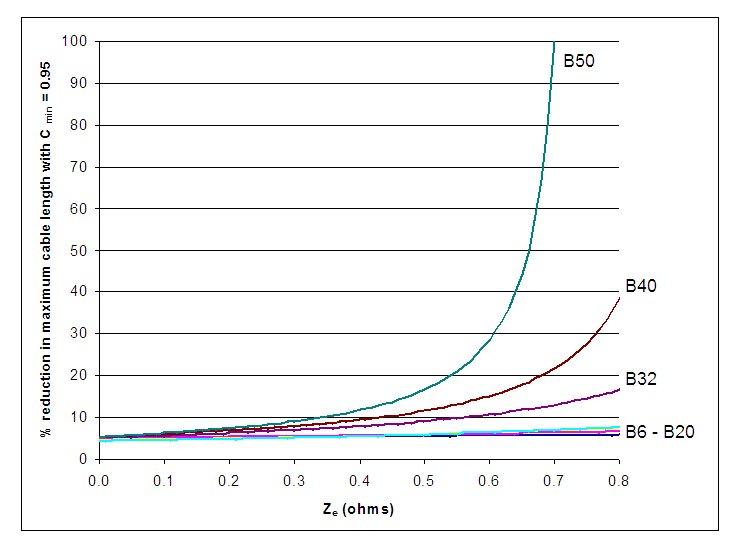Many will be aware that proposals for Amendment 3 of BS7671:2008, due to appear next year, include a reduction in maximum permissible Zs figures (to achieve required disconnection times), so that the required disconnection times are still achieved when supply voltage is appreciably below the nominal voltage (230V).
The current proposal involves an adjustment factor (‘minimum voltage factor’, Cmin) of 0.95, which would mean that disconnection time requirements would be guaranteed to be satisfied at supply voltages as low as 218.5V. I have suggested to the authors of BS7671 that it would seem more logical to utilise a factor of 0.94, such that disconnection times would be achived down to the lowest permitted supply voltage of 216.2V (230V - 6%).
The following tabulation indicates what the new figures in BS7671 would (give or take rounding errors) look like (for Type B MCBs) with the current proposal (Cmin=0.95) and with my suggestion (Cmin=0.94). I also include a tabulation of what I assume would be the corresponding ‘OSG figures’, lower by a factor of 1.24, to take into account the fact that BS7671 gives figures for conductors at ‘operating temperature’ (often 70 °C), whereas the OSG gives figures for 10 °C.
I was wondering to what extent (if any) electricians feel that achieving these reduced ‘maximum Zs’ figures will represent a significant problem in practice.
Kind Regards, John
The current proposal involves an adjustment factor (‘minimum voltage factor’, Cmin) of 0.95, which would mean that disconnection time requirements would be guaranteed to be satisfied at supply voltages as low as 218.5V. I have suggested to the authors of BS7671 that it would seem more logical to utilise a factor of 0.94, such that disconnection times would be achived down to the lowest permitted supply voltage of 216.2V (230V - 6%).
The following tabulation indicates what the new figures in BS7671 would (give or take rounding errors) look like (for Type B MCBs) with the current proposal (Cmin=0.95) and with my suggestion (Cmin=0.94). I also include a tabulation of what I assume would be the corresponding ‘OSG figures’, lower by a factor of 1.24, to take into account the fact that BS7671 gives figures for conductors at ‘operating temperature’ (often 70 °C), whereas the OSG gives figures for 10 °C.
I was wondering to what extent (if any) electricians feel that achieving these reduced ‘maximum Zs’ figures will represent a significant problem in practice.
Kind Regards, John




